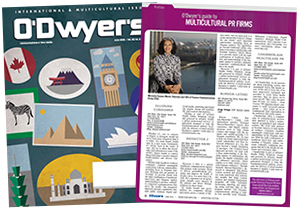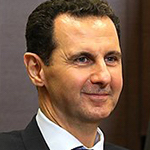|
Mari Escamilla |
The U.S. Census Bureau reports that the country’s minority population rose from 32.9 percent in 2004 to 37.9 percent in 2014, making the population more racially and ethnically diverse than ever before. U.S. births have been the driving force behind the increase in the Hispanic population: more than half of all Americans ages five or younger are now non-white. Fueled by immigration, recent reports indicate that Asians have emerged as the fastest growing of the three major ethnic and minority populations. This should come as no surprise, as it has been predicted that the U.S. will become a majority-minority country by the mid-2040s.
|
|
Millennials at the forefront
Leading part of the recent growth and change are Millennials. This group has surpassed Baby Boomers and now represents more than a quarter of the total U.S. population. As of January 2014, 74 percent of online adults were using social media. Considering more than 40 percent of the Millennial generation are non-white, it’s important to take into account their cultural preferences.
Millennials are actively engaging in content that identifies with them based on their life experiences and language(s) of preference. This can be a daunting realization for large brands that already have a strong social media presence on English language channels with “general market,” non-culturally diverse content. Instead of creating separate pages that share content in different languages or for different ethnicities and potentially segregating a brand’s customer base, try developing a multicultural community within each social media profile.
By building a multicultural and inclusive social media community, brands can continue to grow their pre-existing channel on Facebook, Twitter, Instagram and other relevant social media outlets. In order to do so successfully, a brand will need to invest both the time and money necessary to develop a strong team and foundation of resources. According to Advertising Age, those between the ages of 17 and 34 are expected to spend more than $200 billion annually, beginning in 2017.
Millennials will spend $10 trillion in their lifetimes, and studies have shown that 48 percent of Millennials say word-of-mouth influences their product purchases more than TV advertising. Word-of-mouth influence typically come from social media; 63 percent of Millennials stay updated on brands through social networks. Additionally, 43 percent of Millennials have liked more than twenty brands on Facebook.
Develop an authentic voice
In order to benefit from the potential influence of social media, a brand needs to build trust with Millennials. This can be done via authenticity, meaning using culturally diverse imagery and content and employing a social media team that reflects the brand’s customer base. If a high percentage of the non-white community on a brand’s Facebook channel is Hispanic, it will be imperative for the social media team to produce content that doesn’t fall within stereotypical assumptions. Think back to when The Academy posted a photo of Penelope Cruz and Robert De Niro on their Instagram account but confused Cruz for Salma Hayek, “the other Hispanic female actor” in Hollywood.
If a high percentage of the non-white community on a brand’s Facebook channel is African American, an emphasis should be placed on topics of interest without exploiting them. Football fans might recall when after progressing to the Super Bowl the Seattle Seahawks tweeted, “We shall overcome #MLKDay” alongside a photo of Russell Wilson in tears and a quote from Martin Luther King, Jr. The team was forced to issue an apology and delete the tweet after followers called them out for exploiting the historical holiday for the sport.
By hiring experts in social media who can relate to the customer base, a brand will build trust and mitigate potential errors. Authenticity is ranked over content when consuming news on social media by 43 percent. Millennials have to first trust the brand before reading or looking at the content brands have produced.
Executing multicultural social media
Develop an understanding of who your community is online. Review insights provided by each social media outlet to better understand language preferences, interactions and ethnicities. Be sure to listen to really know how to tailor your social media strategy.
Build a team that reflects your online community. Hiring experts who relate to the base will help build trust and develop authentic social media content.
Develop content that has diverse imagery. If your brand is a baby gear company, don’t solely use imagery of a light skinned or blue eyed child. Be more inclusive and diverse in your choice of imagery.
Develop content that relates to the community. Play on the strengths of your social media team to connect with the life experiences of your social media community. MITÚ and Pero Like have used the experiences of their staff to connect with their Latino community with funny memes like, “refried beans are the glue that hold my life together.”
Develop content that highlights relevant holidays, events or seasons. Latinos, African Americans, Asians and other ethnicities will each have their holidays of importance. Don’t assume all communities care about the same holidays, and be sure to consider key dates.
Incorporate an advertising budget. Once you’ve started to develop your multicultural community, start developing a few advertisements that help you continuously grow the following. Test content to learn what resonates best with your potential audience.
Best practices in social media are always evolving, but what hasn’t changed is its level of importance in an organization’s general marketing strategy. With the recent changes in the composition of the U.S. population, it’s critical that brands adapt their organizations to both understand those communities and also listen to them to learn how they like to be communicated with. Listening to a customer base will expand an organization’s understanding of “who we are” and strengthen their ability to maintain a multicultural community. Don’t be afraid to dive into the multicultural space — just be ready to listen, learn and adapt.
* * *
Mari Escamilla leads Marketing Maven’s multicultural marketing practice.




 Edelman is providing communications support to Panama’s Ministry of Commerce and Industries under an agreement capped at $97,100 per month.
Edelman is providing communications support to Panama’s Ministry of Commerce and Industries under an agreement capped at $97,100 per month. Ballard Partners has recruited State Department veteran Matt Bryza as a senior policy advisor.
Ballard Partners has recruited State Department veteran Matt Bryza as a senior policy advisor. Teneo has extended its contract with the Salama Bint Hamdan Al Nahyan Foundation for an additional four months to July 31, adding another $1.8M in fees to the New York firm’s coffers.
Teneo has extended its contract with the Salama Bint Hamdan Al Nahyan Foundation for an additional four months to July 31, adding another $1.8M in fees to the New York firm’s coffers. The Syrian Kurdish militia recruits Jim Dornan Strategies to press Congress for continued support in their battle against ISIS and Syrian president Bashar Assad.
The Syrian Kurdish militia recruits Jim Dornan Strategies to press Congress for continued support in their battle against ISIS and Syrian president Bashar Assad. The Government of Hungary has hired Strategic Improvisation Inc. to generate positive media coverage and combat negative press coverage of the Central European country. (6 reader comments)
The Government of Hungary has hired Strategic Improvisation Inc. to generate positive media coverage and combat negative press coverage of the Central European country. (6 reader comments)


 Have a comment? Send it to
Have a comment? Send it to 
No comments have been submitted for this story yet.